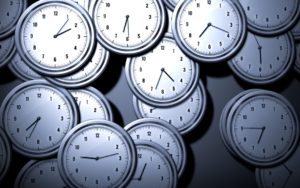RESOURCES
Big Idea: Time

Time. It seems we either have too little or too much of it, but in reality, we all have the same 24 hours a day. How we use our time ultimately comes down to concepts like focus, efficiency, mindfulness, and choice. But how often do we deeply dive into how we think about time and use it? We likely just complain about the lack of time or lament over lost time.
Starting with the Big Idea of time and moving to an essential question of “How can I find time for everything?” the challenge to “Make Time!” is designed to be pursued as an individual or a group. A thorough investigation of what time means, cultural and community perspectives of time, how we use it, what we consider essential, and how we can use our time better will result in a deeper understanding of time. We can develop, implement, and evaluate meaningful solutions for moving forward through this personal understanding of time.
ENGAGE
Big Idea: Time
Essential Question: How can I make time for everything?
Challenge: Make time!
Sample Guiding Questions
These are the only example questions. We encourage you to ask as many personal and contextual questions as possible.
- How do I use my time?
- Where do I feel like I don’t have enough time?
- When do I feel like I am wasting time?
- How and why is the concept of time different across cultures?
- What can I learn from these perspectives?
- What do I use to keep track of time?
- Who impacts my time?
- How do I define quality time?
- When do I feel the most productive? Why?
- When do I feel hurried? Why?
- Is the problem time or focus?
- Etc.
*Once you brainstorm all of the questions, organize and prioritize them.
INVESTIGATE
Guiding Activities and Resources
These are only a set of example activities and resources, and the learners will need to evaluate the quality of the content. They are not verified or necessarily supported; they are just examples. The ones you choose should directly relate to your specific guiding questions and context. Activities and resources for adults, adolescents, and younger children will differ. The goal is to develop solutions that mean something in your community and are sustainable.
Example Activities
- List and prioritize activities.
- Define what success looks like for your week (what needs to get done and what does success look like)
- Keep a time diary for a week – Read tips and tricks on making better use of time.
- Take time every evening to reflect on how you used time and how it made you feel.
- Keep track and note when you feel like you are wasting time.
- Keep a time vs benefit log.
- Keep track of when you say: “I don’t have time . . .” or “I wish I had time to . . .”
- Keep track of what you give time to without thinking about it.
- Talk with your friends about how they see time.
- Etc.
Example Resources
- What is a time diary
- Time Management Tips
- Nine ways to save more time
- 20 Quick Time Management Tips to Super Boost Your Productivity
- Stop Trying To Manage Your Time, It’s Not Getting You Anywhere
- Etc.
Synthesis
Using the research findings from your Investigations, you can develop a synthesis showing a clear understanding of the challenge. For help with creating a synthesis, explore this resource.
Solution Prototypes – Using your research synthesis, create multiple solution ideas and review each to ensure your research supports it. Share the prototypes with various stakeholders and get feedback.
Solution – with the feedback from the stakeholders, develop one solution with the most potential for success.
ACT
Implement – Develop a plan to implement the solution with the stakeholders and collect data about the impact.
Evaluate – Using quantitative and qualitative measures, determine if the solution is valid and what can be improved.
REFLECT, DOCUMENT, AND SHARE
Throughout the experience, document the events and reflect on what is happening to build on prior knowledge and identify future questions.
Share what you learned with your local community and the world. Use #CBLWorld on social media.
